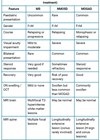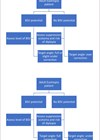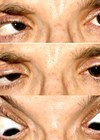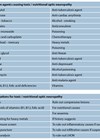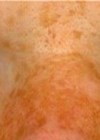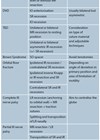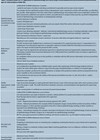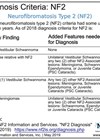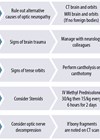Top Tips
Commonest mistakes during the refraction certificate exam
Ophthalmology specialty trainees are required to pass the refraction certificate exam within the first two years of training. If one passes this exam before entering a training programme, this can add two points to the portfolio during applications. In this...
International medical graduates in ophthalmology
IMGs in the NHS The General Medical Council (GMC) defines an international medical graduate (IMG) as someone who has obtained their primary medical qualification outside the European Economic Area (EEA) [1], meaning that an IMG is a medical doctor whose...
Demyelinating optic neuropathy
Introduction Optic neuritis (ON) is an inflammatory process affecting the optic nerve. After glaucoma, it is the most common optic neuropathy affecting patients under the age of 50. The usual presentation of typical ON is unilateral subacute loss of vision...
Binocular single vision (BSV)
Introduction In this article I will try to summarise some of the definitions, tests and assessments performed in the strabismus clinic to assess patient binocular potential. This is a key feature of strabismus assessment, especially in adults, and it will...
Myopia-related strabismus – heavy eye syndrome
Introduction Myopia can be associated with any type of strabismus, but high myopia has increased frequency of esotropia and vertical heterotropia. The incidence and severity of the strabismus increases with the degree of myopia and age of the patient. Classification...
Congenital cranial dysinnervation disorders (CCDDs)
The term congenital cranial dysinnervation disorder (CCDD) was introduced by Gutowski et al. in 2003 to describe strabismus conditions that result from developmental error in innervation of some of the extraocular muscles. Examples of these conditions include Duane’s syndrome and...
Toxic nutritional optic neuropathy (TON)
Toxic optic neuropathy are a group of conditions manifested by reduction of visual functions secondary to damage to the anterior visual pathways from exposure to a toxin. The implicated toxin could be work-based, food or drink related, or iatrogenic medication....
Supranuclear ocular motility disorders
Figure 1: Bilateral INO Introduction Complex ocular motility disorders are a diagnostic challenge. These patients come with very complex ocular motility presentations and require a careful and detailed assessment in order to find the correct diagnosis and arrange appropriate investigations....
Surgical strategies to manage incomitant strabismus in adults
Incomitant vertical and / or horizontal strabismus is a challenging presentation. Patients are usually symptomatic as the onset is either sudden so they haven’t developed any coping mechanisms or very complex so that any coping mechanisms will not cover all...
How to nearly (but not quite) get into ST1 ophthalmology training – some reflections
Ophthalmology is often considered to be an elite, highly competitive specialty, with little room for failure. Candidates and trainees tend to cultivate a certain urbane and confident style, and the bottleneck at ST1 can feel rather intense. The majority of...
Neurofibromatosis type 2 – diagnosis, features and MDT approach
NF2 is a genetic condition caused by mutation in a single gene (NF2 gene) on chromosome 22. The NF2 gene provides instructions to produce a protein called merlin, also known as schwannomin. This protein functions as a tumour suppressor, preventing...
Traumatic optic neuropathy
In neuro-ophthalmology we get asked a lot about management of patients who suffered significant trauma and presented with loss of vision secondary to presumed traumatic optic neuropathy (TON). TON happens usually in the context of significant craniofacial trauma. The incidence...




